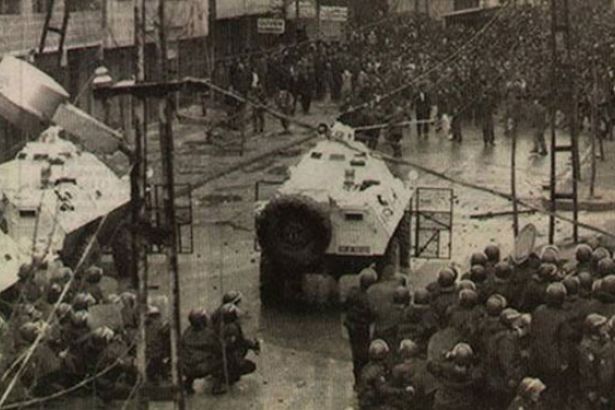
In the Gazi district of Istanbul, the victims of the 1995 massacre have been commemorated. Numerous Alevis and representatives of Alevi groups and organizations called for the punishment of former Turkish Prime Minister Tansu Çiller, who is held responsible for the massacre and the pogroms of the 1990s.
The Gazi massacre took place from 12 to 15 March 1995 and ended as a pogrom against the Alevi population. At least 22 people were murdered by ultra-nationalists and police officers. Like the massacre of Sivas only two years earlier, the onslaught was directed against Alevis. On the night of 12 March 1995, “unknown perpetrators” from nationalist circles hijacked a taxi in Gazi and cut the driver’s throat. The perpetrators then shot indiscriminately with automatic weapons into Alevi cafés, cultural centres and pastry shops as they drove past. One person died, countless others were injured. The vehicle was then set on fire.
This led to protests in front of a police station located 200 meters from the crime scene. The peaceful demonstration escalated when a military tank drove into the crowd. The “security forces” murdered 20 demonstrators with targeted shots and wounded hundreds. The pogrom was accompanied by systematic mass arrests, house searches and police raids in several districts of Istanbul. Some of the detainees, like thousands of other people in Turkey – mainly Kurds – are still considered “disappeared” today.
Commemoration “accompanied” by police helicopters and water cannons
As every year, the commemoration event was opened with a demonstration. Hundreds of people gathered in front of the Cemevi (Alevi place of worship). After a minute’s silence for the victims, the crowd set off behind a front banner with the inscription “From Gazi to Ümraniye – We demand justice”, chanting “The victims of Gazi are immortal” and “The murderers will answer to the people.” Many participants carried photos of the victims of the massacre. When the names of the victims were read out, the crowd shouted at the top of their voices: “Is here”.
The march was overshadowed by threatening gestures of Turkish security forces. During the demonstration, police helicopters circled the sky above the district. In front of the central post office in Gazi, where a rally took place, the demonstration was encircled by the police with water cannons and armored vehicles.
The government’s plan failed
Engin Engin, who lost her brother Sezgin Engin in the Gazi massacre, gave a speech on behalf of all surviving families. He explained that with the pogrom the government tried to fuel a conflict between the Alevi and Sunni Islamic population and to break the solidarity within the fraternal religious communities and peoples. This plan failed because of the unity built in Gazi, he noted.
The crowd then moved on to the Gazi cemetery. There, carnations were laid on the graves of the victims of the massacre.
